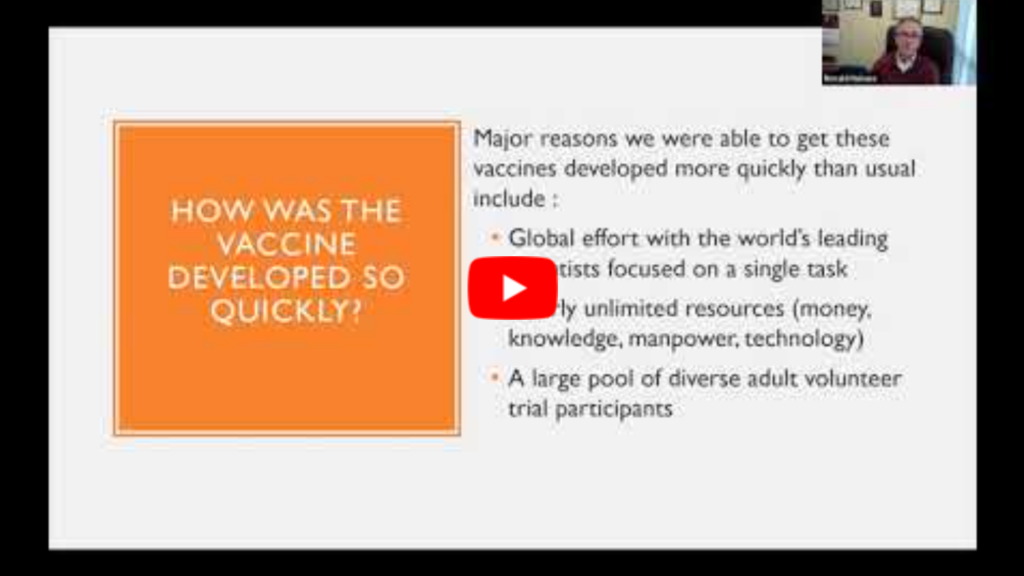After awaiting the highly anticipated emergency use authorization (EUA) by the Food and Drug Administration (FDA), two different COVID-19 vaccines have finally arrived in the United States. ID Care is New Jersey’s infectious diseases specialist and a partner with many healthcare facilities across the state. To ensure healthcare partners are as knowledgeable as possible, ID Care’s Dr. Ronald Nahass has created a primer on the latest COVID-19 vaccines covering such topics as:
- Reviewing the basic concepts of vaccination for infectious diseases
- Discussing the different vaccines being developed for COVID-19
- Describing the benefits of the vaccines
- Outlining the process and challenges of the national vaccination effort
One of the major topics covered is why a vaccination program is the best path forward in limiting the spread of COVID-19. “In the United States, over 300,000 people have died,” said Dr. Nahass. “In order to stop the spread of COVID-19, we need to reach about 60% to 70% immunity as a population. At the moment, it’s estimated about 10% to 15% of the population has been infected, and in order to reach the herd immunity threshold of 60%, that means the infection rate would need to be five times as high. So, if you do the math, in order to get to that 60% immunity naturally, we would need to see about 1.2 million deaths. So that’s the power of a vaccine. It will help get us to that 60% number without incurring all the deaths.”
The current COVID-19 vaccines were developed in under 12 months when it has taken some other vaccines up to 60 years. Dr. Nahass applauded the effort, saying, “There were many reasons why we were able to develop these vaccines so quickly. First, it was a global effort with the world’s leading scientists focused on a single task. Second, we had unprecedented access to unlimited resources such as money and manpower. Third, a large pool of diverse adult volunteers were willing to be trial participants. And lasty, messenger RNA was used, a technology which had been developed prior, which took years off the development of these vaccines.”
Dr. Nahass also discussed how some patients might not understand how these vaccines work, and it’s important to remind people that the vaccines won’t give you COVID-19. “The Pfizer and Moderna vaccines are what we call messenger RNA or mRNA vaccines. Neither of these vaccines contain the COVID-19 virus. mRNA technology is new in vaccine production but it has been studied for more than ten years and is already being used in cancer treatment. COVID-19 mRNA vaccines give instruction for our cells to make a harmless piece of ‘spike protein’ found on the surface of the COVID-19 virus, and then our bodies respond by producing antibodies which protect us from infection. It’s fantastic technology, and that’s why both vaccines have been effective at about 94% to 95% with similar efficacy among different races, ethnicities, and ages.”
But are the vaccines safe? “Over the past 4 month, tens of thousands of volunteer participants have received the vaccines,” said Dr. Nahass. “There have been no signs of life-threatening toxicity, and side effects are on par with other vaccines, as vaccine reactions are part of the immune response.”
A roll out of the Pfizer vaccine started in the U.S. last week with healthcare personnel receiving the first doses, followed by non-healthcare essential workers, adults with high-risk medical conditions, and finally adults over the age of 65. On what to expect from the vaccine, Dr. Nahass said. “Most vaccines are 2 doses, 3 to 4 weeks apart, and protection will occur 1 to 2 weeks after the second dose. Humoral immune responses at this point have been recognized for up to 6 months or longer, which is good news. We would like it to be longer, but not enough time has passed to know exactly how long it will last. However, we do know that the antibody responses with similar viruses such as SARS CoV1 and MERS may be present for up to three years.”
ID Care continues to be on the front lines of the COVID-19 effort and encourages healthcare workers to understand the value of immunizations and communicate the benefits to patients. “I can’t wait to get the vaccine,” said Dr. Nahass. “My arm is ready, and I’ll be the first in line. The data is convincing, the immediate safety data is clear. The new technology and the method of development have really provided a lot of comfort for me, and it should do the same for your patients.”
Watch the full video below.

